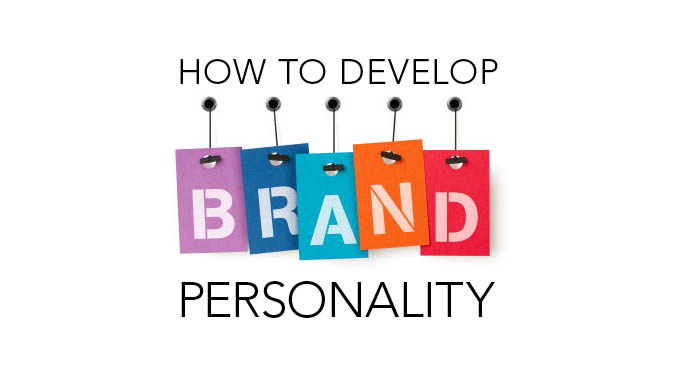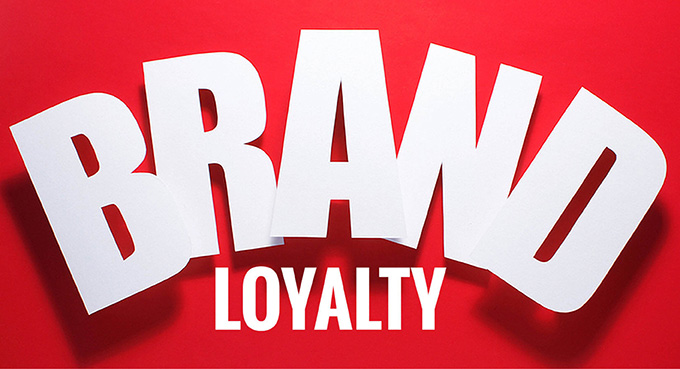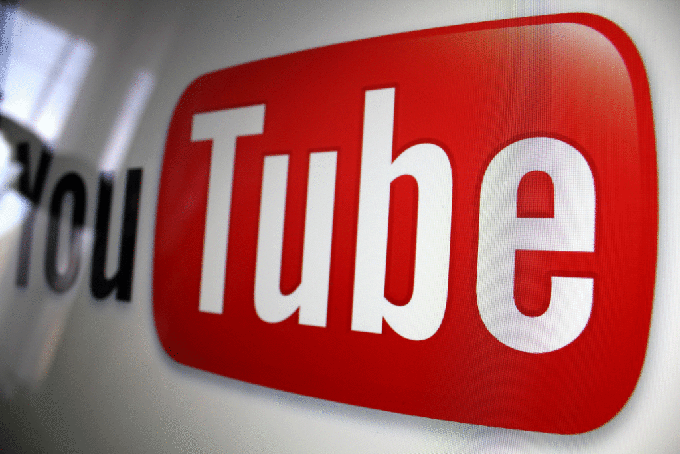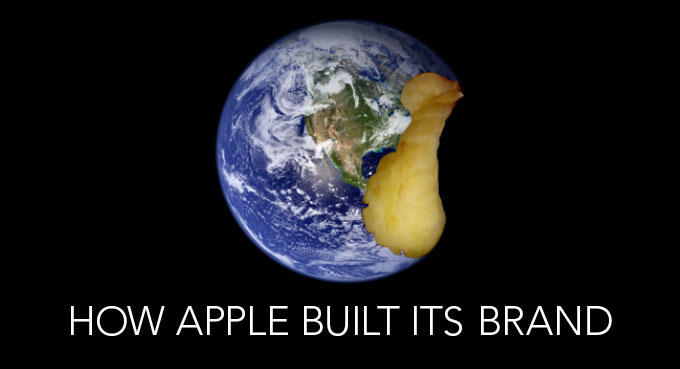Tips For Making A Corporate Video Go Viral
What makes a corporate video go viral? Truth is, no-one really knows. There’s no magic formula, no tried and tested route to success. That might sound like a downer, but think of it this way: it opens up the field to one and all, adding spice and excitement to the whole enterprise. And even though there is no guaranteed method of making your video fly, it’s worth taking a look at the ones that have gone viral for ideas and inspiration.
So, if you are looking to turbo-boost your own promotional video, here are a few pointers for you to consider.
Start With a Solid Foundation.
The corporate videos that make it big have very firm roots – they are carefully designed to give a clear message to their customers and promote their brand. Your video is going out there to pitch your business to the world, to draw in your core customers and attract new ones. At the planning stage, consider how your video will appeal to your target audience. Focus on the core values of your business as a kick-off point: How will you creatively communicate these to your audience through your video? By pinning down the message you want to convey, you will create a video with integrity that resonates with your target audience.
A great example is the Dove brand Real Beauty Sketches video. In keeping with the Dove mission, this three minute video gives a powerful insight into the concept of beauty and encourages women to develop confidence in the way they look. The resulting video is strongly engaging and leaves a lasting impression.
Think of the Bigger Picture
If you are serious about making a video you hope will go viral, it’s best to integrate it into an overall marketing strategy rather than treat it as a one-off vanity project. Ask yourself what you want to accomplish. For example, if your goal is to attract customers and boost business, you need to build in a clear take-away message. A viral video that leaves people with no clue about who you are or where to find you is a hugely wasted opportunity. Make sure you design in these details at the planning stage, and brace yourself for the rush of customers if your video makes it big.
Plan the Plot-line
Many of the most successful videos have an overarching narrative to draw in the viewer and keep them watching to the end. Nothing illustrates this better than the Volvo Trucks video featuring Jean-Claude Van Damme performing The Epic Split Feat. Crafted to perfection? You bet!
and finally…
Keep it Short
This is where the art of skilful editing comes into its own. After making that all-important first click, most people will check the running time of a video before committing to watching the whole thing. Short videos stand more chance of going viral, so shave off as much as possible while keeping the overall structure intact. Hats off to Google for their super short Chrome: For Everyone series.
Using Colour During Logo Design
Colours are everywhere, speckled around our world in a multitude of alternative shades – each one different to the last. When it comes to designing a logo, you’ll need to think long and hard about selecting which kinds of colours to use. Sure, you may have your favourite tints and shades – the colours that you’ve always been keen on. But in order for a logo to work to the best of its ability you’ll need to put aside your personal tastes (for the most part) and think about what’s best for the consumer.
The Psychology Of Colour
The very first thing to consider when applying colour to your logo design is the psychological effect that your chosen shade will have on the consumer. As we grow, our minds come to associate particular colours with particular traits, ideas and concepts. This means that colours have the ability to trigger a specific emotional response – stimulating the senses to provoke both positive and negative reactions. Listed here are some of the main shades you might apply to your logo, and their psychological effects:
RED
The colour red is associated with strong emotions such as passion, intensity, urgency and love. Research has revealed that people react to this colour in strong ways (stimulated heart rate, increased sense of eagerness) which is why many brands use it to their advantage to encourage impulse buying. Red has also been proven to increase appetite – with McDonald’s and Walker’s being two examples of big brands who use this psychological effect to their benefit with their bright red logos.
BLUE
The colour blue is often linked to the concept of peace, serenity and calmness. These effects make it perfect for a brand who wants a consumer to feel that they can trust them – which is what makes it a particularly popular choice among political parties. Blue is also related to the aspect of healthy communication – and is often used in work spaces that operate by means of brainstorming and teamwork. It’s no accident that both Facebook and Twitter use a bright shade of blue in their logos to advertise their highly communicative social media sites.
GREEN
Green is a colour that people frequently tend to associate with health, happiness and good-will. It’s a natural choice for nature-based brands like Animal Planet and food produce brands like Starbucks, as it suggests clean, healthy development and manufacturing. It’s also a colour that’s related to the concept of relaxation, and products wishing to send out a soothing message to their consumer often slip in a shade of green into their logo to reinforce a sense of tranquility and ease.
YELLOW
Yellow is a little like the colour red in how it has the ability to generate strong emotions in human beings. It’s sunny and cheerful which provokes a happy reaction much of the time, but it has also been proven to instil a sense of self-belief, optimism and concentration in consumers too. It remains a popular choice for playful products and brands such as SPIKE TV and IKEA, but it’s also used frequently by companies wishing to draw on the consumer’s logical side – such as The Yellow Pages.
The use of colour can go a long way in terms of how it can effect a consumer. Think carefully about what sort of reaction you want your brand to provoke before deciding on a final shade. What’s your brand personality? Do you want a consumer to be happy, calm or stimulated they see your logo? Select the correct colour to help increase the logo’s overall impact.
The Stories Behind Famous Logos
Ever look at a logo and wonder how on earth the creators ever came up it? As a budding designer, no doubt this thought will have crossed your mind more than once – and there are actually some fascinating stories that hide behind a few of the world’s most famous logos. Listed below are some of the ways in which several of these recognisable designs came to fruition. Drawing on their inspiration might even assist you when it comes to creating your very own logo in the future.
Salvador Dali Was Behind The Chupa Chups Lollipop Logo
That’s right – the mind behind surrealist masterpieces such as The Persistence Of Memory was actually the same mind that conjured up the design for Chupa Chups lollipops. Although nowhere near as strange as some of his typical work, Dali’s logo idea for wrapped candy on a stick still differed from many typical brands at the time. Instead of slapping the curly lettering on the side of the wrapper, he plonked the words on top – allowing for a distinguishable and easily readable name that the public would catch sight of without having to twirl the lollipop around in their hand. A small change – but a significant one.
The Word “Mom” Is Hidden In Wendy’s Collar
American fast-food diner Wendy’s has always tried to create the image of a company that produces food using home-cooked recipes like the ones your mother used to use. As such, the word “Mom” is actually visible on the collar of Wendy in the logo. Three blue stripes on either side symbolise the “M” letters, whereas the circular necklace represents the letter “O” in between. Cute, huh?
The NBC Logo Creates The Appearance Of A Peacock
If you take a closer look at the logo for the television broadcasting company NBC, you’ll notice that there’s a white space sandwiched between the six different sprouts of coloured shapes on either side. This was drawn specifically to create the appearance of a peacock spreading its wings – reflecting how “proud” NBC is of the programs it produces.
The Sony VAIO Logo Contains The Symbols For Analogue And Digital Signal
The Sony VAIO logo is one of the most shrewd and intelligent logo designs you’re likely to find. The “V” and “A” are shaped in a wavy way to represent the signal for analogue, whereas the “I” and “O” are drawn in a way that makes them take the appearance of a “1” and “0” – the signal for digital. One quick glance at the Sony VAIO logo will reveal how the company dabbles in both analogue and digital modes of technology.
The Toyota Symbol Contains Three Hearts
The Toyota symbol is a little more intricate than the symbols used for other car companies, and that’s because it’s trying to say something rather specific. Within the symbol are three interconnected ellipses, all of which represent the unification of three separate hearts – the heart of the customer, the heart of the company, and the heart of progress in technology.
5 Signs Your Website Needs A Re-Design
Nothing is forever. You might have designed a tip-top website that you were enormously proud of a few years back, but the internet is forever evolving, and at an astonishingly rapid pace. If you’re averse to change, you’re going to get left behind. Chances are, a landing page that looked terrific a few years ago won’t look quite so good anymore. Listed here are five signs that your website is in desperate need of a redesign.
1. It’s Tough To Find Your Way Around
If you can’t find your way around your own website with ease, a customer isn’t going to have the slightest chance. Websites have developed to the point where navigation has become extremely easy, and if your domain is stuck in the dark ages where search bars and tabs are non-existent, any potential customers will take one quick, scornful look at your site before promptly bailing out. Remember, the human attention span is not showing any signs of lengthening! Take the time to have a good long look at your webpage, and if finding a particular piece of information proves difficult, make sure you put “ease-of-navigation” at the top of your priority list when it comes to revamping.
2. It’s Not Optimised For Mobile
Mobile web browsing is more common than ever nowadays, and if your website isn’t optimised for smartphones and tablets, you’re going to be missing out on a large number of hits and potential customers. Any webpage that’s more than a few years old is unlikely to be optimised for smaller portable and touchscreen devices – and if your site falls into this category, you’ll need to get thinking about making it suitable for mobile browsing as quickly as possible. Today’s sites need to be able to detect the kind of device a visitor is using, and adapt accordingly.
3. It’s Not Visible On Search Engines
If your website is stuck on page 31 of Google, the odds suggest that it’s never going to get seen. To boost your site higher up the search engine rankings, you’ll need to take the time to post fresh and relevant content on a regular basis, whilst also keeping the vital art of Search Engine Optimisation (SEO) in mind. Without taking these actions, your website is forever doomed to sit in the lower reaches of Google’s result pages, that almost nobody ever visits.
4. It Lacks Strong Calls To Action
If your site is trying to sell something, you’ll need a wide selection of strong Calls To Action across several pages, in order to convince visitors to keep hanging around. These are more important than ever in the world of website design, and without effective CTA’s placed at appropriate points around your site, your potential customers will tend to wander away from it without buying your wares.
5. It Looks Old
A no-brainer really, but if a website looks a little dated it’ll send customers running for the hills rather than keeping them curiously clicking around. It’s worth making every effort to develop your website into something slick and sexy – and doing some serious research into the kind of user-friendly applications and elements that’ll work specifically for your target audience.
5 Common Branding Mistakes
Branding is a tricky task, and it should come as no surprise to learn that brand owners continue to make the same mistakes over and over again when attempting to earn their new creation a degree of healthy exposure. Listed here are five common branding errors, all coupled with suggestions on how to avoid them.
1. Resistance To Change
Resisting change is arguably the biggest a mistake you can make with regards to your brand. The marketing world moves at a mind-boggling pace – a pace that entrepreneurs, business owners and designers are often reluctant to adjust to. Why? Because adjusting to this pace may mean drastically changing the creation they put so much work into. It may also mean having to learn about something new that they don’t understand.
For example, older brand designers may be extremely averse to entering the social media world – an area of the internet that they don’t fully comprehend. Problem is, if you’re not willing to change your brand, you may get left behind. Be honest with yourself about your brand, and if you think it may be going stale, perhaps it’s time for a rethink about your ideas and methods.
2. Attempting To Appeal To The Entire World
Why choose a specific audience when you can sell to absolutely everyone? Well, because it’s impossible – that’s why. It’s not unusual for an upcoming entrepreneur to expand their brand, in an attempt to incorporate as many potential customers as possible, but this demonstrates a distinct lack of knowledge about the world of marketing – and very often ends in tears. Don’t overcomplicate things. Pick an audience, reel them in, and keep your brand’s focus and aims nice and simple.
3. Indecisiveness & Inconsistency
A good brand changes when the time is right. A bad brand changes repeatedly for no good reason. The fast-moving modern marketing world will almost certainly require you to tweak things here and there from time to time, but changing your brand too frequently, or too dramatically, will alienate you from your audience. You need to be recognisable and familiar to your customers, otherwise you risk losing them forever.
4. Following The Herd
There’s nothing wrong with being inspired by the bigger brands to head in a particular direction. However, outright cloning will not only make you a laughing stock in the brand world, it’ll also get you into extreme difficulties with copyright law. When it comes to establishing your brand name, differentiation is key. Hat your business offers may have similarities to a highly familiar brand name, but you need to offer something new in order to attract your own audience. Think carefully about what your brand offers that absolutely no other creation does. Why would a customer pick you instead of another brand? Don’t follow the herd. Stand out from it.
5. Thinking That Your “Brand” Is All About Your Logo
A surprisingly common mistake made by entrepreneurs and business owners is assuming that the brand is synonymous with the logo. Yes, this is the image that represents your creation, but it doesn’t matter how intriguing it may be if you don’t reinforce some of your brand values elsewhere. Create a set of rules and guidelines for your brand, work on establishing a particular tone of voice, and integrate these ideas consistently across the board.
How To Build Brand Loyalty
How To Build Brand Loyalty
Developing a loyal and committed audience for your brand is key to its overall success. Discussed here are five key ways to build brand loyalty.
Give Your Brand A Story
People love stories. By explaining the origins and roots of your brand name and how your creation came to be, audiences will immediately begin to feel as though they know your brand. Familiarity, trust and intrigue are all absolutely vital when building a brand with a fine reputation, and you can spark every one of these facets by taking the time to produce a fascinating, illustrious backstory about the brand for your customers.
Make Promises You Can Keep
It’s one thing to promise something, and another not to deliver. Customers expect you to keep your promises – especially the ones in print. You could potentially reel in customers by the bucket load by telling them exactly what they want to hear, but if you fail to follow up on these guarantees they’ll never, ever trust your brand name again. Be honest with yourself and examine exactly what your brand is capable of. Make promises you can keep – and watch your audience develop and thrive as a result.
Keep In Touch With Your Customers
A completed transaction should never signal the end of the customer experience. In fact, it should be the very beginning. Keep in touch with your customers by means of a newsletter, e-mail and text message – letting them know how greatly you appreciate their support and what exciting things your brand will be offering them in the future. However, you’ll need to make sure you don’t invade their personal space and contact them too frequently or you’ll risk appearing spammy. Throw them a follow-up note and occasionally remind them about what your brand can offer rather than bombard them with info.
Reward Your Regulars
Just because a customer becomes a regular doesn’t mean you should leave them be. Don’t treat them as a source of guaranteed income like so many other brands do – offer them further incentives to keep coming back and spending even more on your product. Loyalty systems are held in high regard by consumers, and by rewarding your audience in some way you’ll only increase the chances of them coming back and spreading the word about your brand to their friends.
Encourage and Embrace Feedback
No doubt you will have come across companies asking you a follow-up question such as “How did we do?” after using their services. As it turns out, there’s a very good reason for this. Taking aboard feedback – regardless of whether it is positive or negative – is absolutely essential when it comes to creating a successful brand. If you don’t realise and acknowledge your mistakes quickly, by the time you come to rectify the issues it may be too late and your customer will have vanished forever. Seek feedback from customers about what sort of experience they had with your brand – always remembering to thank them for their time. When they next interact with your creation/product – clearly show them how you’ve taken aboard their suggestions and how you’ve acted accordingly to improve your brand. Nothing will make your customers feel more appreciated than that.
Using YouTube To Market Your Brand
It’s a little hard to believe that YouTube is just ten years old. Nowadays, this video sharing and streaming site is at the heart of absolutely everything, and is officially the second most popular search engine in the world (just behind Google).
If you’re looking to market your brand, it seems absolutely crazy to ignore the enormous amount of traffic that pours in and out of YouTube every single day. Nonetheless, very few brand owners take advantage of the opportunity to advertise on YouTube. Unless you have the right kind of skills in-house, it can feel a little daunting to upload a video to the site, and several companies swerve it completely in favour of trying to create brand awareness by means of social media channels like Facebook and Twitter. These guys are missing a trick. It really isn’t that scary or difficult to market your brand on the world’s biggest video sharing site. Indeed, you can actually do it extremely effectively by following these four simple steps.
1. Create A Tip-Top Channel That Reflects Your Brand Image & Values
First things first – create a YouTube channel that reflects your brand’s image and values. There are plenty of customisation options available for tweaking a channel, and in order to create a lasting, recognisable brand image you’ll need to be consistent right across the board – from your webpage to your video hub. Design your channel carefully, pack it with content and update it regularly. After all, there’s nothing worse than stumbling across a YouTube channel that’s been gathering dust for months.
2. Master YouTube SEO
An incredible amount of traffic flows through YouTube each and every day. Whilst this opens your brand up to a huge number of potential new customers, it also means you’re left competing against thousands of competitors. In order for people to find your content, you’ll need to master YouTube search engine optimisation (or SEO for short). Think long and hard about the keywords that represent your brand, and integrate these keywords carefully into your video titles and meta tags. Writing detailed video descriptions is also highly recommended, as this will create more opportunity for you to cram in a few extra keywords (but don’t go overboard, Google’s algorithms can detect this and you’ll be penalised).
3. Create An “About Us” Video
People like to put a face to a name, and by creating a short “About Us” video for your brand you can encourage customers to identify with your company. It only needs to be a short, simple piece about why you created the brand, what customers can gain by interacting with you, and what sort of products you have on offer. Be sure to introduce yourself, and any key players in the team, in a swift and friendly way. It might take few practice shoots, but it’ll be totally worth it in the long run.
4. Integrate Your YouTube Into Other Social Media Channels
Finally, don’t forget to share, share, share. That really is the best way to help get your video content out there on the web and make sure it’s seen by as many people as possible. Throw in some hashtags on Twitter and get embedding videos on your Facebook brand page. It’ll redirect traffic to your channel and allow customers to stumble across all the great content you’ve created.
How Apple Built Its Brand
It’s difficult to argue that Apple are anything other than the undisputed King of Brands. Everybody knows them. Every business owner wants their company to be like them. They’ve got the world by the tail and aren’t letting go any time soon.
Taking a peek into the storybook of how a brilliant brand was built is the first step to uncovering how it became so successful in the first place. It can give you clues as to where you need to go when you first start out, where to go when you’re feeling stuck, and what choices to make when you encounter a setback – and let’s face it, there always will be obstacles to overcome when you’re building a business from scratch.
What better brand to look at for lessons than the mega multinational technology corporation that is Apple?
Identification & Loyalty
No doubt you will have heard someone in your lifetime state four little words that are music to Apple’s ears: “I’m an Apple user”. If you haven’t done yet, you will do soon. Apple users are a loyal bunch of customers, and almost exclusively stick to buying Apple products when it comes to technology. In a competitive marketplace where new companies are always coming out with brand new ideas, on the face of things it may seem a little strange that Apple have managed to obtain such a high percentage of customer retention. When you take a closer look, it’s not actually strange at all.
Apple have understood exactly what’s most important about building a brand – creating customer loyalty. Over time, Apple have welcomed their customers with open arms, thanked them for every single purchase, promised high quality for every single product, and made customers feel like part of the Apple family.
Amassing a dedicated group of users not only guarantees sales for the foreseeable future, it also sees word of your brand spread to new customers looking for a product to try. Customers who are treated with respect and dignity will recommend brands to friends. Take care of your customers, and they’ll take care of your company. They’ll identify with your brand, and will never need to look elsewhere for an alternative.
Why?
This is what the customer wants to know. Why your brand? What makes your products better than a competitor’s? This is another aspect of branding where Apple have hit the nail on the head. The late, great Steve Jobs and his team always issued statements about new products that immediately told consumers WHY Apple funded their new invention. They continue to guarantee that each new idea will make a terrific contribution to culture, and change the world in new and exciting ways. This is what your brand ought to do too. Tell your customers right from the beginning why your brand is so unique, and why it was even thought up in the first place.
Think Different
“Think Different” is Apple’s philosophy, and one of the key reasons why they’ve done so well when it comes to establishing a foothold (and subsequently an enormous share) in the market. Apple always put themselves in the customer’s shoes before thinking up a new idea. What does the world really need? And in what new way can you provide it?
Don’t follow the herd. Think differently. Be something that other brands are not. Tricky, yes. Impossible? Never. Keep seeking inspiration and you will find it. After all, you’re an entrepreneur.












